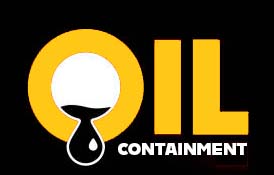In the oil industry, proper containment barriers are essential for preventing leaks and spills that can have devastating environmental and financial consequences. Secondary containment researchers play a vital role in developing and implementing these barriers to protect our natural resources and communities. One effective material that is often used in creating containment barriers is polyurea.
Polyurea is a type of elastomer that is known for its strength, flexibility, and chemical resistance. It is commonly used in the oil industry for coating containment barriers because of its ability to create a seamless and impermeable layer that can withstand harsh environmental conditions. When properly applied, polyurea can provide a reliable and long-lasting barrier against leaks and spills.
When creating containment barriers in the oil industry, there are several key steps that researchers should follow to ensure their effectiveness. The first step is to thoroughly assess the site where the containment barrier will be installed. This includes evaluating the terrain, soil composition, and potential sources of leaks or spills. By understanding the specific challenges of each site, researchers can design a containment barrier that is tailored to the unique needs of the location.
Once the site has been assessed, researchers can begin designing the containment barrier. This involves selecting the appropriate materials, such as polyurea, and determining the best placement and configuration for the barrier. It is important to consider factors such as the volume of oil that needs to be contained, the pressure it will be under, and any potential movement or shifting of the ground. By carefully planning the design of the barrier, researchers can minimize the risk of leaks and ensure its effectiveness.
After the design phase is complete, researchers can begin the construction of the containment barrier. This involves properly preparing the site, applying the polyurea coating, and testing the barrier for any weaknesses or defects. It is crucial to follow industry best practices and safety guidelines during the construction process to ensure the barrier is installed correctly and can provide reliable protection against leaks and spills.
Once the containment barrier is in place, researchers should regularly inspect and maintain the barrier to ensure its ongoing effectiveness. This includes monitoring for any signs of wear or damage, conducting routine inspections, and making any necessary repairs or upgrades. By staying proactive in the maintenance of the containment barrier, researchers can prevent potential issues before they become a major problem.
In conclusion, creating effective containment barriers in the oil industry is crucial for protecting the environment and preventing costly leaks and spills. By following a systematic approach that includes thorough site assessment, careful design, proper construction, and regular maintenance, researchers can ensure that containment barriers are strong, reliable, and long-lasting. Polyurea is a valuable material that can enhance the effectiveness of these barriers and provide an added layer of protection against leaks and spills. With proper planning and execution, containment barriers can play a key role in safeguarding our natural resources and communities for years to come.
